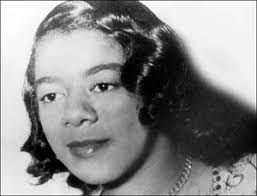
Currently, there are no grassroots organizations fighting for housing justice in New Hampshire despite the fact that it is a pressing issue. Because of this, I wanted to find a successful housing justice movement somewhere within the country that could serve as a model for a potential organization in my community. Ideally, I would have liked to find an organization that inflicted change in either Montgomery County or Albuquerque, but unfortunately, I was unable to find any examples in either of these places. I came across the story of Dorothy Gautreaux in Anyon’s Radical Possibilities, so I decided to further research her movement in 1960s and 1970s Chicago. Her success of winning a legal battle to help move people out of Chicago public housing and into new housing in the surrounding suburbs demonstrated exactly the kind of change I hope to inspire in New Hampshire.
Dorothy Gautreaux was a leading housing justice organizer against the segregationist policies of the Chicago Housing Authority. She was a community-minded person that truly believed she and her fellow tenants could “direct their own lives” (Baron 1991). Gautreaux became the leading voice for the tenants at CHA meetings and she portrayed those living in public housing not as “victims of abuse but of people with potential to be tapped” (Baron 1991). Her primary goal of organizing was “to help tenants gain the voice she knew was theirs,” and she did this through holding workshops and bringing carloads of people to demonstrations (Baron 1991).
After years of organizing, Gautreaux, in coordination with the American Civil Liberties Union, filed a lawsuit against the CHA, charging them with segregation in violation of the Civil Rights Act (Anyon 2014). The case made it all the way to the Supreme Court, where it ruled in favor of Gautreaux and the ACLU. Unfortunately, Gautreaux had passed away before her case was won, but the resulting program that helped to move public housing tenants out to the suburbs was named in her honor. From 1976 to 1998, over 7,000 Chicago families chose to move under the Gautreaux Program (Anyon 2014). At first, this played out in schools with the students from families that moved being placed in classes for the learning disabled, but over time, these students became significantly more likely to attend college (Anyon 2014). Furthermore, benefits for those who moved continued into adulthood, as they usually worked higher paying jobs than those who stayed in the city (Anyon 2014). Dorothy Gautreaux’s legacy lives on, as she and the program she helped make possible have inspired over 50 other mobility programs across the country (Anyon 2014).